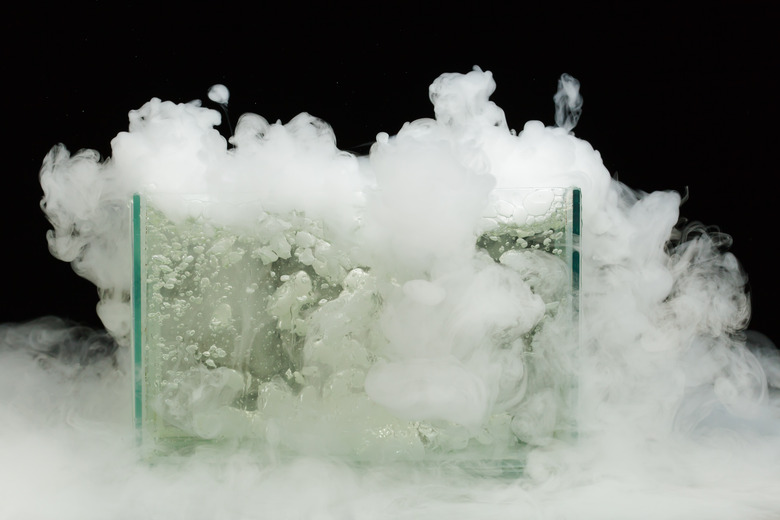How To Complete Chemical Reactions
Chemistry students often find themselves confused when first asked to complete chemical reactions, but with a periodic table on hand and some basic math skills, the task is not as difficult as it may seem. To complete a chemical reaction, you'll first need to know what kind of reactions can occur, and how the various elements behave.
TL;DR (Too Long; Didn't Read)
To complete chemical reactions, first determine the type of reaction that is occurring. Following that step, the process is determined by the elemental properties of the reactants. Keep in mind that these methods are not exact; you may need to balance your chemical equations after following these steps, and it may benefit you to confirm your chemical formulas with a reference, if you're doing anything more complicated than homework problems.
Determine the Reaction Type
Determine the
Reaction Type
Look at the reactants to determine the kind of chemical reaction taking place. This will require some basic knowledge of common reaction types: If there is a single reactant, it is a decomposition reaction; if there are two or more reactants that can join, it is a composition reaction. If an oxygen and a hydrocarbon reactant are present, it is likely a combustion reaction. Two ionic compound reactants generally point towards a double replacement reaction, while a reactive metal or halogen reacting with a less reactive metal or halogen points toward a single replacement reaction. Once you know your reaction type, find the appropriate section that follows and proceed.
Decomposition Reactions
Decomposition Reactions
The products of the reaction will be the individual components of the reactant compound: These may be elements, or they may be smaller compounds. Use previous knowledge of which elements are found as diatomic molecules to fill out the correct chemical formulas, and your reaction will be complete. For example, water (H2O) as a reactant will create hydrogen and oxygen gas (H2 and O2) as its products.
Composition Reactions
Composition
Reactions
The product of the reaction will be a combination of the elements or compounds acting as reactants. For example, hydrogen (H) and nitrogen (N) will combine to form HN. Fill out the correct chemical formulas along these lines, and your reaction will be complete.
Combustion Reactions
Combustion
Reactions
The products of a combustion reaction will almost always be water (H2O) and carbon dioxide (CO2). Write down the products along these lines, and the reaction will be complete.
Double Replacement Reactions
Double
Replacement Reactions
The products of a double replacement reaction will be similar to the reactants: The anions, the second of the two ions that make up each compound, will be reversed in the product compounds. For example, AlCl3 and NaOH will react to form Al(OH)3 and NaCl. Fill out the correct chemical formulas along these lines, and your reaction will be complete.
Single Replacement Reactions
Single
Replacement Reactions
The products of a single replacement reaction will be incredibly similar to the reactants: The singular metal or halogen molecule will swap places with the metal or halogen molecule in the reactant compound. For example, CaBr2 and Cl will react to form CaCl and Br. Fill out the correct chemical formulas along these lines, and your reaction will be complete.
Cite This Article
MLA
Flournoy, Blake. "How To Complete Chemical Reactions" sciencing.com, https://www.sciencing.com/complete-chemical-reactions-7483027/. 11 April 2018.
APA
Flournoy, Blake. (2018, April 11). How To Complete Chemical Reactions. sciencing.com. Retrieved from https://www.sciencing.com/complete-chemical-reactions-7483027/
Chicago
Flournoy, Blake. How To Complete Chemical Reactions last modified August 30, 2022. https://www.sciencing.com/complete-chemical-reactions-7483027/
